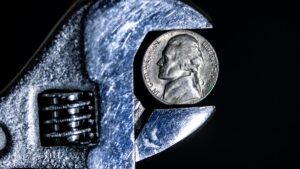Ionic aims to further scale up world class Makuutu rare earths resource

A resource update is expected in Q1 2024. Pic: via Getty Images.
- Ionic Rare Earths completes Phase 5 infill drill program at Makuutu on Retention Licence (RL) 00007 in Uganda
- Results pending and expected to boost confidence and scale of updated Mineral Resource Estimate (MRE)
- Makuutu’s basket contains 71% magnet and heavy rare earths content, is one of the most advanced ionic clay-hosted rare earths projects in the world
Ionic Rare Earths has completed phase 5 infill drilling at its flagship Makuutu project in Uganda, confident the pending assays will add to the resource update expected early next year.
The company’s aim is to become a miner, refiner and recycler of sustainable and traceable magnet and heavy rare earths needed to develop net-zero carbon technologies.
Makuutu itself is one of the most advanced heavy rare earth projects globally available as a source for new supply chains emerging across Europe, the US, and Asia.
In March, Ionic Rare Earths (ASX:IXR) announced a positive stage 1 Definitive Feasibility Study (DFS) for RL1693, the first of six tenements to progress to a Mining Licence Application (MLA) which is pending in Uganda.
The Makuutu Stage 1 DFS defined a 35-year life initial project producing a 71% rich magnet and heavy rare earth carbonate (MREC) product basket and the potential for significant potential and scale up through additional tenements.
The results from this infill drilling on RL00007 is expected to both increase the confidence and scale of the project’s resource update – scheduled for Q1 2024.
Increasing resource confidence and scale
The company has now completed 128 holes for 2,501m with first assays expected to be released this quarter.
Ionic MD Tim Harrison said the Phase 5 program is an important step in advancing the next stages of development at Makuutu for a much larger project.
“Our focus on the delivery of the Makuutu Heavy Rare Earths Project in Uganda positions us to provide a secure, sustainable, and traceable supply of magnet and heavy rare earth oxides,” he said.
“Along with our Ionic Technologies Belfast recycling facility, Makuutu is key to us harnessing our technology to accelerate mining, refining, and recycling of magnet and heavy rare earths that are critical for the energy transition, advanced manufacturing, and defence.
“The infill drilling has progressed to plan and we await assays, expected over the remainder of 2023, to feed into a significant increase in confidence on the MRE associated with RL00007 which will support our next MLA at Makuutu.
“We await the results of the metallurgical test work on samples selected from the recent RAB drilling as part of this Phase 5 drill program which will enable revision to the exploration target aimed for late this quarter, and also assist the company plan future drilling across both EL00147 and EL00257.”
Commercialising rare earth recycling
While exploration results are pending, Ionic is also progressing the commercialisation of high purity magnet rare earths from its newly commissioned recycling demonstration plant in Belfast.
Being able to recycle waste permanent magnets could help alleviate the projected deficit for MREOs as the market grows from the current US$3bn to US$15bn by the end of the decade.
In June, the plant recorded milestone production of 4.2kg of 99.7% grade of the light REE neodymium oxide and 0.6kg of 99.8% grade heavy REE dysprosium oxide – both used in the fabrication of permanent REE magnets used in electric vehicle motors and wind turbines – from waste magnets.
And just last month, the company announced a landmark partnership deal with Ford, Less Common Metals and the British Geological Society to create a UK rare earths supply chain from recycled magnets.
This article was developed in collaboration with Ionic Rare Earths, a Stockhead advertiser at the time of publishing.
This article does not constitute financial product advice. You should consider obtaining independent advice before making any financial decisions.
Related Topics

UNLOCK INSIGHTS
Discover the untold stories of emerging ASX stocks.
Daily news and expert analysis, it's free to subscribe.
By proceeding, you confirm you understand that we handle personal information in accordance with our Privacy Policy.








